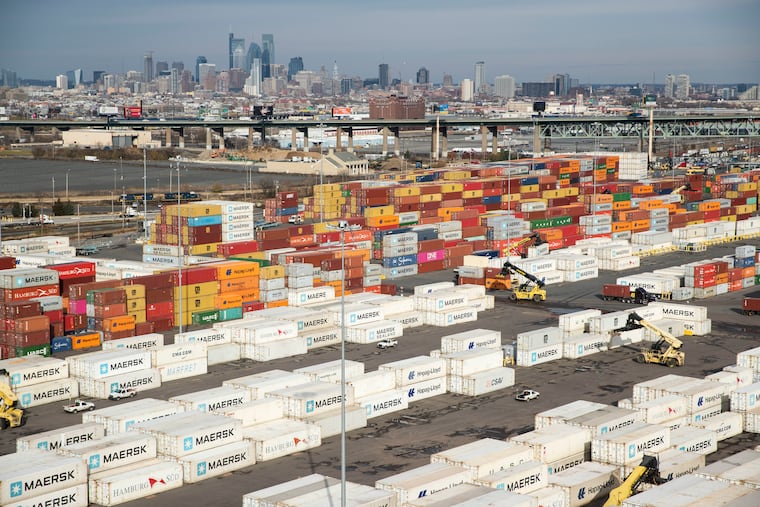Philadelphia’s port is getting a $246 million investment from the state, Gov. Wolf says
The new funding will go to projects that increase the port’s capacity to handle cargo, such as creating more warehousing space and expanding the port’s land inventory.

Pennsylvania Gov. Tom Wolf said Friday that the state will invest $246 million to help expand Philadelphia’s port, adding to the $300 million his administration committed to port development in late 2016.
During the five years in between, five super post-Panamax cranes have sprung up along the port’s Delaware River shoreline, three of them financed by the state funds. The amount of cargo container volume handled at the port increased about 60%. And global supply chain disruptions ignited by the coronavirus pandemic focused more public attention on why port infrastructure matters.
Wolf, a former businessman now in the final year of his second term as governor, said he had “perfect” timing in recognizing the significance of the port when he first took office.
“I came out of a business that was basically logistics,” Wolf said at a press event Friday in South Philadelphia. “I understand how important logistics is, and I looked at this port and said … we have an asset here that is a diamond in the rough.”
The port is growing
Last year alone, container volume grew 15%, from 640,799 units in 2020 to 739,323 in 2021, port officials said this week. In 2021 PhilaPort also broke ground on a 200,000 square-foot distribution center, near its Packer Avenue Marine Terminal, which is scheduled to be completed this spring.
Jerry Sweeney, the port’s board chair, credited the state’s earlier round of funding with allowing the port to update its infrastructure and “become a serious competitor in the global marketplace.”
This next phase, “port development plan 2.0,″ Sweeney said, enables “long-term sustainable growth” that will attract more industry and jobs to the state.
Specifically, he said, the new funding will go to projects that increase the port’s capacity to handle cargo, such as creating more warehousing space and expanding the port’s land inventory. Port officials are aiming to grow cargo to more than 1 million container units a year.
A challenge for the port is “acquiring more land to grow our operations,” Sweeney said.
Ongoing construction projects to upgrade I-95 in Pennsylvania will also benefit port operations, by improving “connectivity, safety and access to PhilaPort and surrounding businesses,” state Transportation Secretary Yassmin Gramian said.
A former PhilaPort board member, Gramian said she watched as it “transformed itself to a high-performance port.” The installation of the huge cranes, for instance, boosted the “volume and velocity” of containers the port can handle, she noted.
While the port has dealt with some supply chain backups during the pandemic, the private operators of the Packer Avenue Marine Terminal managed to cut down a backlog of containers between August and December, and the port never experienced wait times for ships to unload like those making headlines out of Southern California, The Inquirer reported late last year.
“PhilaPort stands as an incredible example of what is possible when planning and vision are supported through coordinated investment,” said state Sen. Nikil Saval, a Democrat from Philadelphia. “The global supply chain hardships that we’ve witnessed the past few years under the pandemic are a clarion call for investment in our infrastructure.”